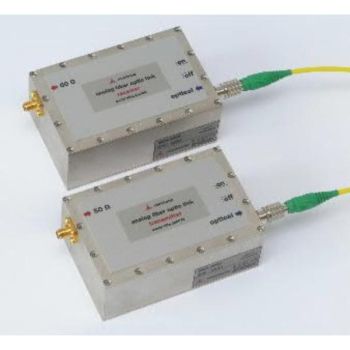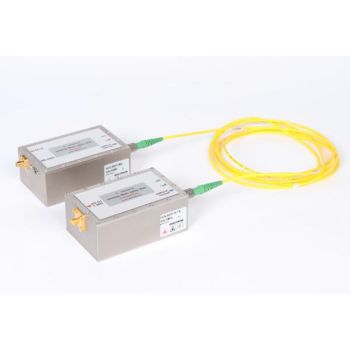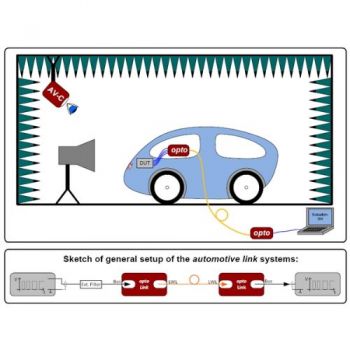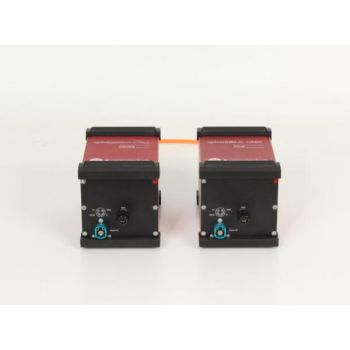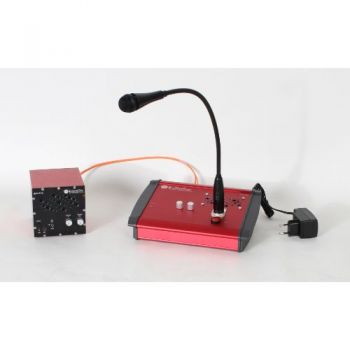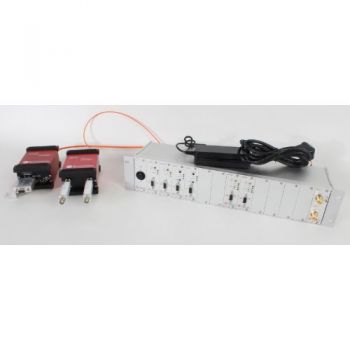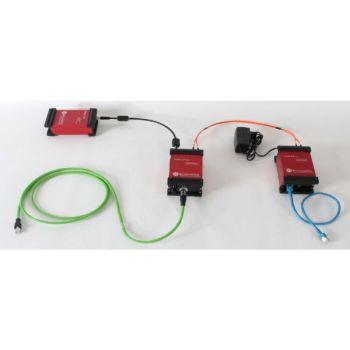Products
- 80Hz to 3.5GHz Bandwidth
- Pulse or CW analog signals
- Up to 1km Tx/Rx distance
- Battery Powered
- 80 Hz to 3.5 GHz Bandwidth
- Pulse or CW analog signals
- Up to 1 km Tx/Rx distance
- Battery Powered
- DC to 500 MHz Bandwidth
- Pulse or CW analog signals
- Up to 1km Tx/Rx distance
- Battery Powered
- DC to 25 MHz Bandwidth
- Pulse or CW analog signals
- Up to 1km Tx/Rx distance
- Battery Powered
- Bidirectional Optical Isolation: 20 m multimode fiber link (62.5/125 µm) for galvanic isolation of Control Pilot, CAN, and auxiliary signals.
- Long Life Battery Power: Internal 8.4 V, 4 Ah NiMH pack delivers up to 10 hours of continuous operation.
- Robust Construction: Anodized aluminum housing with rubber bumpers and grounding lug, rated for CISPR 25 Class 5 environments.
- Versatile Signal Interfaces: BNC connector for Control Pilot plus D SUB 15 female for CAN, temperature sensors, connector lock control, etc.
- Wide Protocol Support: Compatible with CCS, CHAdeMO, and GB/T charging standards for comprehensive EVSE/EV EMC testing.
- Compact & Portable: 140 × 86 × 65 mm enclosure weighing ≈760 g—ideal for on site and laboratory test setups.
opto, Fiber-optic, Automotive Link Overview
The optoLAN 100/1000Base-T1-BCM89887 is a bidirectional optical transmission system for automotive Ethernet 1000Base-T1 and 100Base-T1 signals. Featuring Rosenberger HSD (Z-coded) connectors, optical transmission, and a shielded case, it ensures reliable, interference-free performance for EMI and EME testing, proven in automotive EMC labs. (picture to be updated)
The dAV series includes not only the digital, optical transmission of camera signals (dAV-C), it can also transmit analog audio and/or video signals uni- or bidirectionally. Fields of application are e.g. the acoustical monitoring of engine speed or surveillance of an audio or video system in immunity tests. The main unit dAV is thus equipped with different options. The dimensions of the housing depends on the options chosen.
The Analog transmission links of the „U-series“ can be used to transmit analog or digital signals 1:1. They can be used to optically transmit signals from inside to the outside of the ALC or to transmit a stimulus inside the chamber (with optional output filter).
The optoLAN-BCM89811 system can be used for the optical transmission of automotive ethernet signals with Broadcom© BCM89811© and other 100BaseT1 chipsets. There are two setups available, T1 to T1 (standard) or T1 to Tx (with integrated media converter => optoLAN-BCM89811 -MC), see separate setup document. The standard connector is Rosenberger HSD (Z-coded).
The optoLAN-100-MAX system can be used for the optical transmission of Ethernet (LAN-) signals with a data rate of up to 100Mbit/s (100BaseTx). The two identical transceivers are supplied by internal batteries and connected with an optical fiber. With the optical transmission and the shielded case, the system is well equipped for EMI and EME tests. The device is not downward compatible to 10BaseT. If you need this option you can get the optoLAN-Gb.
This optical device is used for the bidirectional optical transmission of ethernet signals with a transmission rate of 1 GBit/s. It is downward compatible to 100BaseT and 10BaseT (automatically detected). The system consists of two identical transceivers supplied by batteries and a duplex 62.5/125µm-multimode optical cable.
A new type of connector is available now: The M12 connector (MMT471A315, counterpart MNF881A315-0001) by Metz Connect was integrated into our optical transmitter for Ethernet signals optoLAN, as well as optoLAN-Gb. Therefore, these devices are even fitter for tests of electromagnetic compatibility.

